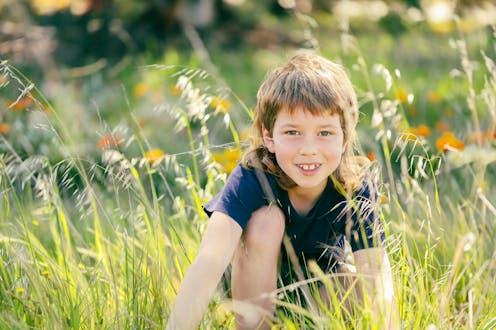Yes, the state of the environment is grim, but you can make a difference, right in your own neighbourhoood
- Written by Kylie Soanes, Postdoctoral Fellow, School of Ecosystem and Forest Sciences, The University of Melbourne

The newly released State of the Environment[1] report paints a predictably grim picture. Species are in decline, ecosystems are at breaking point, and threats abound. For many of us, it can feel like a problem that’s too big, too complex and too distant to solve.
But this report also shows every Australian can be on the conservation frontline. We can save species in the places we live and work. According to the report, Australia’s cities and towns are home to more than 96% of our population and 46% of threatened species. We have mapped the occurrence[2] of hundreds of threatened species in urban areas.
Read more: This is Australia's most important report on the environment's deteriorating health. We present its grim findings[3]
We share our cities with iconic koalas[4], charming gang-gang cockatoos[5] and floral wonders like Caley’s grevillea[6]. And, as the report notes, some species are found only in urban areas[7] – our cities and towns are the last chance to save them from extinction. What an incredible opportunity to reconnect Australians with our fantastic natural heritage and protect it at the same time.
Our research[8] shows a huge appetite for saving nature in cities. Councils, industry and community groups all over the country are working to make change.
Read more: The 39 endangered species in Melbourne, Sydney, Adelaide and other Australian cities[9]
Here are five things we can think about to improve the state of our city environments.
1. Small but mighty
Don’t have a lot of space? That’s OK! Whether it’s a small pond, garden strip or solitary gum tree, these often provide a key resource that isn’t found elsewhere in the nearby landscape. This means they pack a punch when it comes to supporting local nature.
And resources like these all add up. Researchers found[10] that a collection of small, urban grassland reserves supported more native plants, and rarer species, than just a few large reserves.
So while making one small change might feel futile, it can make a big difference.
2. Embracing the ‘in between’
Conservation doesn’t just happen in nature reserves, which is good, because urban areas don’t have many. Backyards are already making huge contributions through “gardens for wildlife[11]” initiatives.
Read more: Want to help save wildlife after the fires? You can do it in your own backyard[12]
But what about the more unconventional spaces? We found[13] city-dwelling species take advantage of roadsides, schoolyards, carpark gardens, railway stations and rooftops. These are all opportunities[14] for us to make a little more space for nature in cities.
3. Grand designs for wildlife
People aren’t the only ones facing a housing crisis – wildlife struggle too. The tree hollows, rock piles and fallen wood that many species call home are often removed in favour of sleek lines and tidy urban spaces.
You can provide valuable real estate for local critters by adding nesting boxes[15], bee hotels[16] and lizard lounges[17]. And simply leaving a designated “messy patch” in your garden improves the local habitat too.
4. Creative connections
Moving safely through cities can be risky for wildlife. They have to navigate cars, fences, roaming pets and swathes of concrete.
Many councils and road agencies are looking at creative ways to help wildlife get from A to B. Solutions range from rope bridges for western Sydney’s sugar gliders[18] and tunnels for Melbourne’s bandicoots[19] to forested bridges[20] for Brisbane’s bush birds. Some gardeners in Bunbury even built their own backyard “possum bridges” to help the endangered western ringtail possum in their neighbourhoods.
Read more: 10 million animals are hit on our roads each year. Here’s how you can help them (and steer clear of them) these holidays[21]
5. People power
Having threatened species live close to people is typically seen as bit of “negative’” in the conservation world. But this closeness can be an advantage if the community is aware and engaged.
Orchids like the sunshine diuris[22] and Frankston spider orchid would surely be extinct if not for countless hours of volunteer work, crowd-funding and the passion of the local community.
Get involved through your local council or “Friends of” groups[23] to see how you can support nature in your neck of the woods.
Urban habitats – often small and scrappy, always valuable
There are so many wonderful ways to support nature in cities. Recent examples include conservation goats saving native skinks[24], floating habitat rafts in city waterways[25] and using flowerpots[26] on concrete sea walls to support marine life. New ideas are being explored and tested all over the country.
The Living Seawalls project is restoring biodiversity along the seawalls that account for over half of the foreshore around Sydney Harbour.Some of the best examples bring all these ideas together. For example, Melbourne’s Pollinator Corridor[27], led by the Heart Gardening Project, helps individual community members convert their own small urban patch into a bee-friendly garden. When complete, 200 individual gardens will create an 8km pollinator paradise between two of the city’s largest parks.
Right now, efforts to save nature in cities are driven by champions – individuals in our communities, local councils or industry who see an opportunity to make a difference, no matter how small, and fight to make it happen. Imagine what we could achieve if more of us pitched in.
So, look around. Can you add just one small patch? Contact your local council about turning a neglected roadside strip into a pollinator paradise? Or maybe set up a little B&B for wildlife in your backyard?
Read more: B&Bs for birds and bees: transform your garden or balcony into a wildlife haven[28]













